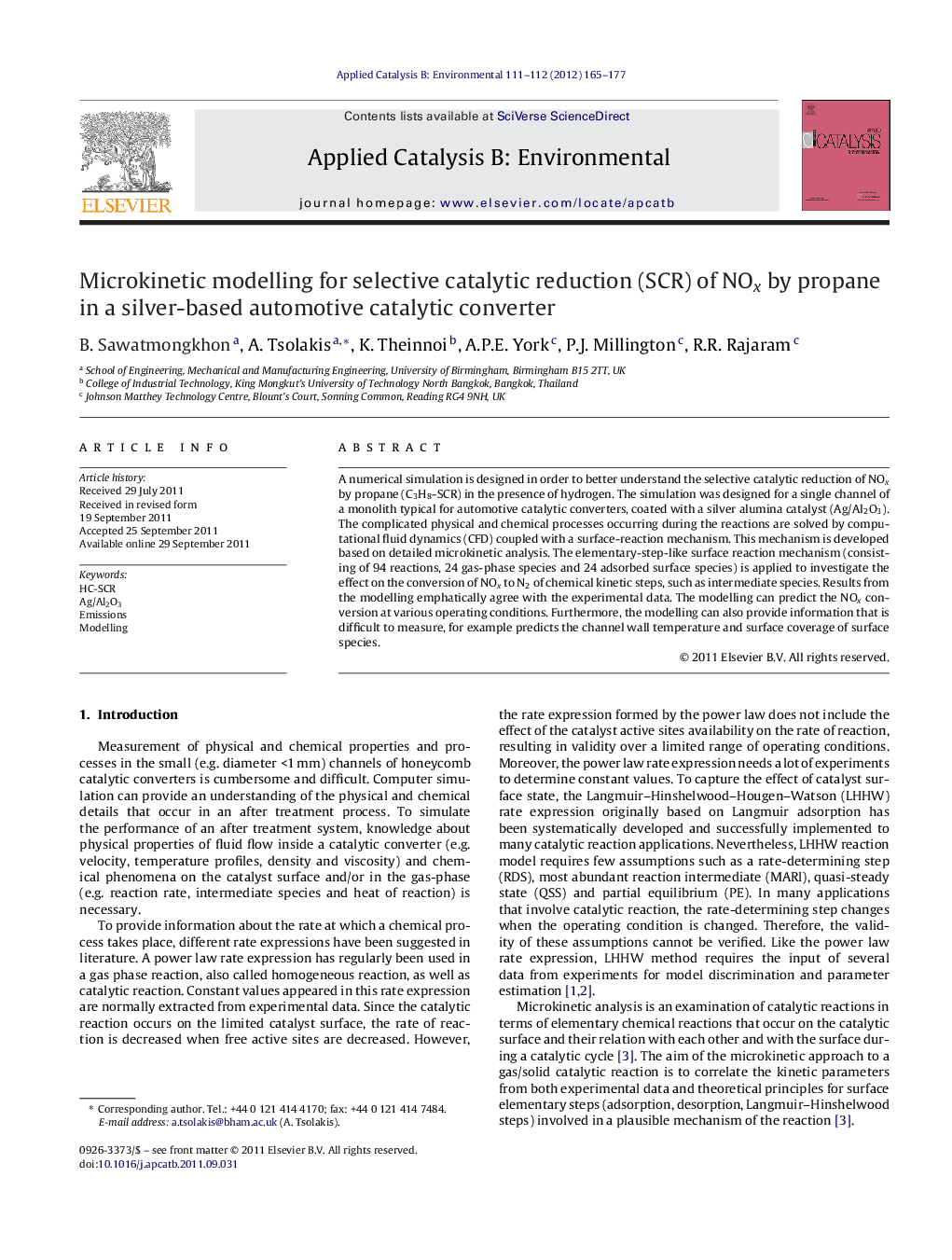| کد مقاله | کد نشریه | سال انتشار | مقاله انگلیسی | نسخه تمام متن |
|---|---|---|---|---|
| 46461 | 46440 | 2012 | 13 صفحه PDF | دانلود رایگان |

A numerical simulation is designed in order to better understand the selective catalytic reduction of NOx by propane (C3H8-SCR) in the presence of hydrogen. The simulation was designed for a single channel of a monolith typical for automotive catalytic converters, coated with a silver alumina catalyst (Ag/Al2O3). The complicated physical and chemical processes occurring during the reactions are solved by computational fluid dynamics (CFD) coupled with a surface-reaction mechanism. This mechanism is developed based on detailed microkinetic analysis. The elementary-step-like surface reaction mechanism (consisting of 94 reactions, 24 gas-phase species and 24 adsorbed surface species) is applied to investigate the effect on the conversion of NOx to N2 of chemical kinetic steps, such as intermediate species. Results from the modelling emphatically agree with the experimental data. The modelling can predict the NOx conversion at various operating conditions. Furthermore, the modelling can also provide information that is difficult to measure, for example predicts the channel wall temperature and surface coverage of surface species.
Figure optionsDownload as PowerPoint slideHighlights
► Detailed elementary reaction mechanism for C3H8-SCR with hydrogen.
► Rate parameters estimated by using microkinetic analysis.
► Two-dimensional Navier–Stokes equations coupled with a surface-reaction mechanism.
► Heat and mass-transfer correlation to link surface and bulk properties not required.
Journal: Applied Catalysis B: Environmental - Volumes 111–112, 12 January 2012, Pages 165–177